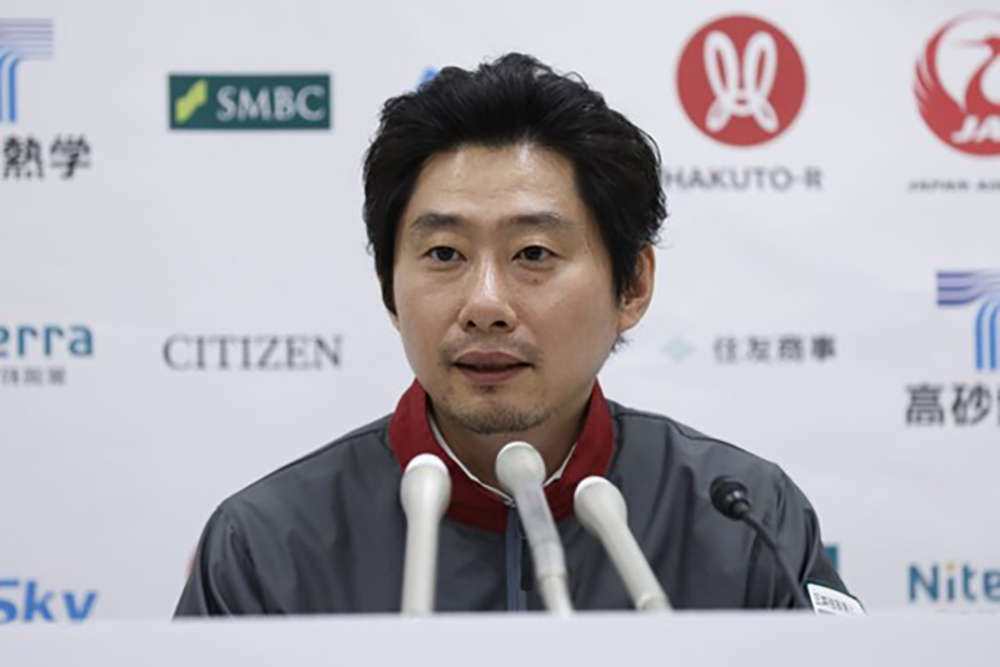
總部位于東京的iSpace公司表示,該公司的月球著陸器與地面失去聯(lián)系,,著陸器很可能在月球表面硬著陸,,未能完成月球著陸任務(wù)。
該公司有志成為世界首個登陸月球的私營企業(yè),,其“白兔-R”太空探索計劃“任務(wù)一號”(Hakuto-R Mission 1)著陸器計劃于日本時間周三凌晨著陸,。但在工程師確認(rèn)著陸器在最終接近月球時處于垂直于月面位置后不久,地面與著陸器的通信就中斷了,。
“已經(jīng)確定,,著陸器最終在月球表面硬著陸(即墜毀)的可能性很大?!痹摍C(jī)構(gòu)周三在東京發(fā)表的一份聲明中表示,。
該公司首席執(zhí)行官袴田武史表示,這次事故不會阻止該公司未來的任務(wù),。
他在聲明中表示:“重要的是將這些知識和學(xué)習(xí)成果反饋給‘任務(wù)2號’及以后的任務(wù),,以便我們能夠充分利用這些經(jīng)驗(yàn)?!?/p>
去年12月,,iSpace公司著陸器搭乘埃隆·馬斯克的太空探索技術(shù)公司(SpaceX)“獵鷹9號”(Falcon 9)火箭發(fā)射升空。它于3月進(jìn)入月球軌道,,攜帶著兩個月球車和其他有效載荷,。
該公司本月早些時候在東京證券交易所(Tokyo Stock Exchange)公開上市。該股周二在日本股市收盤下跌1%,。首席執(zhí)行官袴田武史是第二大股東,,持有約15%的股份。
iSpace公司是希望將著陸器安全地放置在月球表面的數(shù)家商業(yè)公司之一,。兩家美國公司,,總部位于休斯頓的直覺機(jī)器公司(Intuitive Machines Inc.)和總部位于匹茲堡的Astrobotic Technology Inc.,計劃在今年晚些時候進(jìn)行無人飛行任務(wù),。
谷歌獎競爭者
這家總部位于東京的公司于2010年正式成立,,旨在參加谷歌月球X大獎(Google Lunar X Prize)太空競賽。該公司表示,,希望在2040年之前建立月球定居點(diǎn),。該公司計劃通過向月球運(yùn)送設(shè)備和貨物來獲取利潤。
iSpace公司還與美國的查爾斯·斯塔克·德雷珀實(shí)驗(yàn)室(Charles Stark Draper Laboratory)合作,,后者與美國國家航空航天局(NASA)簽訂了一份價值7300萬美元的合同,,目標(biāo)是在2025年將該機(jī)構(gòu)的一套有效載荷運(yùn)送到月球表面,這是美國國家航空航天局阿爾忒彌斯計劃(Artemis program,載人重返月球計劃)的一小部分,。
只有政府和超級大國曾成功地將航天器送上月球表面,。以色列非營利組織以色列太空登陸組織(SpaceIL)是另一個獲得谷歌月球X大獎的團(tuán)隊(duì),他們在2019年試圖將第一個私人資助的著陸器放置在月球表面上,,但航天器速度太快,,在月球表面墜毀。
日本在太空的努力最近經(jīng)歷了數(shù)次挫折,。
日本宇宙航空研究開發(fā)機(jī)構(gòu)(Japan Aerospace Exploration Agency)的H3運(yùn)載火箭是由三菱重工業(yè)公司(Mitsubishi Heavy Industries Ltd.)設(shè)計和制造的,,以滿足對重型運(yùn)載火箭日益增長的需求,但該火箭在2月份因系統(tǒng)故障而無法發(fā)射,,3月份又因其第二級助推器未能點(diǎn)火而在飛行途中發(fā)出自毀命令,,均以失敗告終。
去年5月,,美國總統(tǒng)喬·拜登(Joe Biden)和日本首相岸田文雄(Fumio Kishida)宣布,,兩國將通力合作,將日本首位宇航員送上月球,。由于缺乏年輕宇航員,,日本宇宙航空研究開發(fā)機(jī)構(gòu)今年2月確定了兩名候補(bǔ)航天員:一名紅十字會外科醫(yī)生和一名世界銀行高級雇員。 (財富中文網(wǎng))
譯者:中慧言-王芳
總部位于東京的iSpace公司表示,,該公司的月球著陸器與地面失去聯(lián)系,,著陸器很可能在月球表面硬著陸,未能完成月球著陸任務(wù),。
該公司有志成為世界首個登陸月球的私營企業(yè),,其“白兔-R”太空探索計劃“任務(wù)一號”(Hakuto-R Mission 1)著陸器計劃于日本時間周三凌晨著陸。但在工程師確認(rèn)著陸器在最終接近月球時處于垂直于月面位置后不久,,地面與著陸器的通信就中斷了,。
“已經(jīng)確定,著陸器最終在月球表面硬著陸(即墜毀)的可能性很大,。”該機(jī)構(gòu)周三在東京發(fā)表的一份聲明中表示,。
該公司首席執(zhí)行官袴田武史表示,,這次事故不會阻止該公司未來的任務(wù)。
他在聲明中表示:“重要的是將這些知識和學(xué)習(xí)成果反饋給‘任務(wù)2號’及以后的任務(wù),,以便我們能夠充分利用這些經(jīng)驗(yàn),。”
去年12月,,iSpace公司著陸器搭乘埃隆·馬斯克的太空探索技術(shù)公司(SpaceX)“獵鷹9號”(Falcon 9)火箭發(fā)射升空,。它于3月進(jìn)入月球軌道,攜帶著兩個月球車和其他有效載荷。
該公司本月早些時候在東京證券交易所(Tokyo Stock Exchange)公開上市,。該股周二在日本股市收盤下跌1%,。首席執(zhí)行官袴田武史是第二大股東,持有約15%的股份,。
iSpace公司是希望將著陸器安全地放置在月球表面的數(shù)家商業(yè)公司之一,。兩家美國公司,總部位于休斯頓的直覺機(jī)器公司(Intuitive Machines Inc.)和總部位于匹茲堡的Astrobotic Technology Inc.,,計劃在今年晚些時候進(jìn)行無人飛行任務(wù),。
谷歌獎競爭者
這家總部位于東京的公司于2010年正式成立,旨在參加谷歌月球X大獎(Google Lunar X Prize)太空競賽,。該公司表示,,希望在2040年之前建立月球定居點(diǎn)。該公司計劃通過向月球運(yùn)送設(shè)備和貨物來獲取利潤,。
iSpace公司還與美國的查爾斯·斯塔克·德雷珀實(shí)驗(yàn)室(Charles Stark Draper Laboratory)合作,,后者與美國國家航空航天局(NASA)簽訂了一份價值7300萬美元的合同,目標(biāo)是在2025年將該機(jī)構(gòu)的一套有效載荷運(yùn)送到月球表面,,這是美國國家航空航天局阿爾忒彌斯計劃(Artemis program,,載人重返月球計劃)的一小部分。
只有政府和超級大國曾成功地將航天器送上月球表面,。以色列非營利組織以色列太空登陸組織(SpaceIL)是另一個獲得谷歌月球X大獎的團(tuán)隊(duì),,他們在2019年試圖將第一個私人資助的著陸器放置在月球表面上,但航天器速度太快,,在月球表面墜毀,。
日本在太空的努力最近經(jīng)歷了數(shù)次挫折。
日本宇宙航空研究開發(fā)機(jī)構(gòu)(Japan Aerospace Exploration Agency)的H3運(yùn)載火箭是由三菱重工業(yè)公司(Mitsubishi Heavy Industries Ltd.)設(shè)計和制造的,,以滿足對重型運(yùn)載火箭日益增長的需求,,但該火箭在2月份因系統(tǒng)故障而無法發(fā)射,3月份又因其第二級助推器未能點(diǎn)火而在飛行途中發(fā)出自毀命令,,均以失敗告終,。
去年5月,美國總統(tǒng)喬·拜登(Joe Biden)和日本首相岸田文雄(Fumio Kishida)宣布,,兩國將通力合作,,將日本首位宇航員送上月球。由于缺乏年輕宇航員,,日本宇宙航空研究開發(fā)機(jī)構(gòu)今年2月確定了兩名候補(bǔ)航天員:一名紅十字會外科醫(yī)生和一名世界銀行高級雇員,。 (財富中文網(wǎng))
譯者:中慧言-王芳
Tokyo-based Ispace said it lost contact with a lander bound for the moon and that the spacecraft likely made a hard landing on the lunar surface, ending the mission.
The company aimed to become the first commercial space attempt to place a lander on the moon intact, with its Hakuto-R Mission 1 lander scheduled to touch down early Wednesday morning Japan time. But communication with the spacecraft was lost shortly after engineers confirmed the lander was in a vertical position on final approach.
“It has been determined that there is a high probability that the lander eventually made a hard landing on the moon’s surface,” it said in a statement issued Wednesday in Tokyo.
Chief Executive Officer Takeshi Hakamada said the mishap would not deter the company from future missions.
“What is important is to feed this knowledge and learning back to Mission 2 and beyond so that we can make the most of this experience,” he said in the statement.
Ispace launched its lander in December aboard one of Elon Musk’s SpaceX Falcon 9 rockets. It entered lunar orbit in March and was carrying two rovers and other payloads.
The company earlier this month publicly listed?its shares on the Tokyo Stock Exchange. The stock closed down 1% on Tuesday in Japan. CEO Hakamada is the second-largest shareholder with an ownership stake of about 15%.
Ispace is one of several companies hoping to place the first commercial lander on the moon’s surface. Two US firms, Houston-based Intuitive Machines Inc. and Pittsburgh-based Astrobotic Technology Inc., have uncrewed missions planned for later this year.
Google Prize Contender
Officially formed in 2010 to compete in the Google Lunar X Prize, the Tokyo-based company has said it wants to create a lunar settlement by 2040. It plans to make money by delivering equipment and goods to and from the moon.
Ispace also has partnered with the US-based Charles Stark Draper Laboratory, which holds a $73 million contract with NASA to deliver a suite of the agency’s payloads to the lunar surface in 2025, a small part of NASA’s Artemis program to return astronauts to the moon.
Only governments and superpowers have been able to successfully land vehicles on the moon. The Israeli nonprofit SpaceIL, another Google Lunar X Prize team, tried in 2019 to place the first privately funded lander on the moon, but the spacecraft came in too fast and crashed on the surface.
Japan’s space efforts have recently experienced several setbacks.
The Japan Aerospace Exploration Agency’s H3 rocket, designed and manufactured by Mitsubishi Heavy Industries Ltd. to meet growing demand for rockets with large payload capacity, failed to launch once in February after a system malfunction kept it grounded, and again in March when a self-destruct order was sent mid-flight after its second-stage booster failed to ignite.
US President Joe Biden and Japanese Prime Minister Fumio Kishida announced last May that their countries would work together to put the first Japanese astronaut on the moon. A dearth of young astronauts led the Japanese space agency in February to recruit two civilians, a Red Cross surgeon and a World Bank senior employee.






